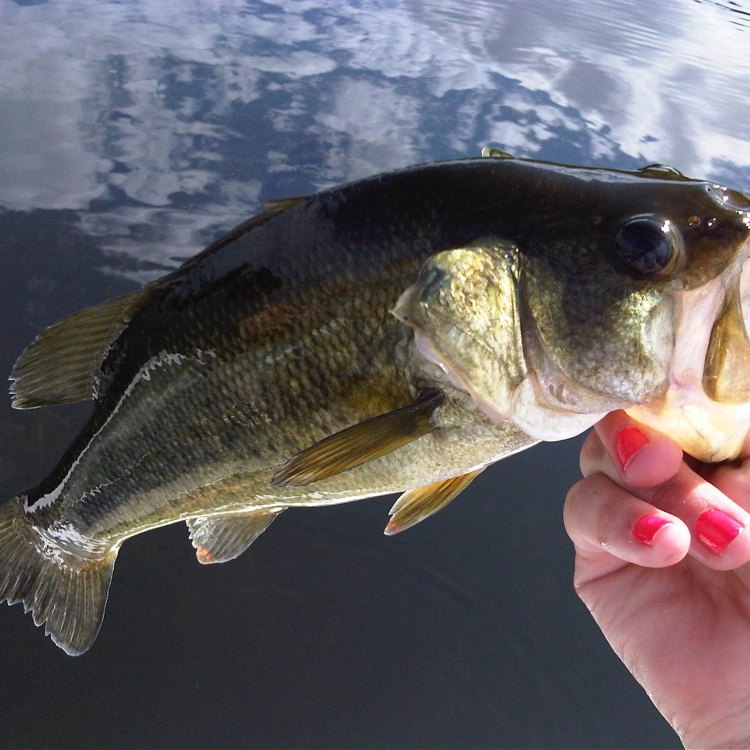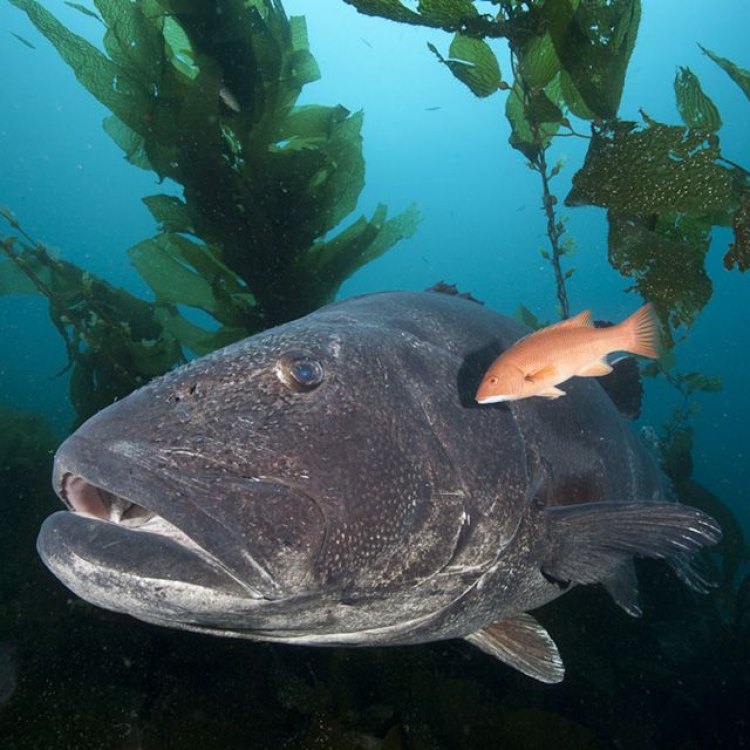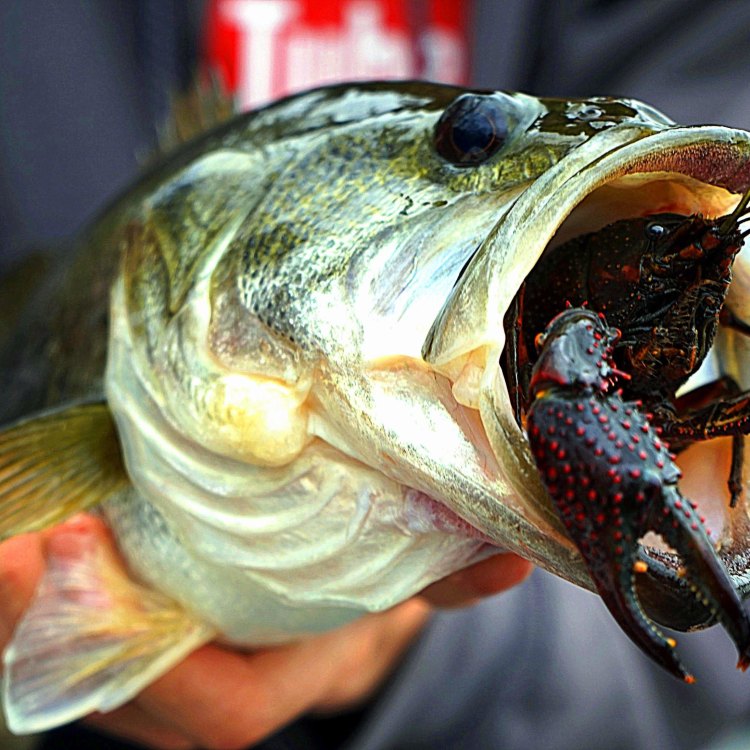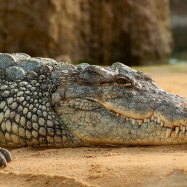
Sea Bass
Up to 1 meter
The Sea Bass, also known as Labrax in the scientific community, is a popular type of fish found in coastal waters and estuaries. Belonging to the Moronidae family, this oval-shaped and slightly compressed fish can grow up to 1 meter in length. It is a prized catch for fishing enthusiasts and commonly used in seafood dishes. Keep an eye out for these beautiful creatures during your next coastal adventure! #seabass #coastalwildlife #moronidae
Animal Details Summary:
Common Name: Sea Bass
Kingdom: Animalia
Habitat: Marine
The Magnificent Sea Bass: A Master of the Sea
Hidden deep within the depths of the North Atlantic and Mediterranean Sea, lies a creature that has captured the fascination of many – the sea bass. With its strong and sturdy physique, the sea bass has long been admired for its agility and prowess in the water. But what makes this fish truly unique? Let's dive deeper into the world of the sea bass and uncover the extraordinary features that make it stand out among its aquatic peers.The Biology of the Sea Bass
The scientific name of the sea bass is Dicentrarchus labrax, but it is more commonly known as the sea bass or European sea bass Sea Bass. It falls under the kingdom Animalia and phylum Chordata, making it a member of the animal kingdom with a backbone. It belongs to the class Actinopterygii, which includes all ray-finned fishes. The sea bass also falls under the order Perciformes, which encompasses over 40% of all fish species, and it belongs to the family Moronidae.Habitat and Distribution
As its name suggests, the sea bass is a marine species, found primarily in the North Atlantic and Mediterranean Sea. Its natural habitat includes coastal waters and estuaries, where the water is fairly shallow and brackish. These areas provide the perfect environment for sea bass to thrive due to the abundance of food sources and protection from large predators.The sea bass can also be found in the coastal waters of Spain, where it is a popular food fish and is often referred to as "lubina." It is no surprise that Spain is considered the country of origin for the sea bass, given its prevalence in the region.
Feeding Habits
The sea bass is a carnivorous creature, meaning it primarily feeds on other animals Saint Bernard. Its diet consists of fish, crustaceans, and mollusks, which it catches using its excellent agility and speed. A remarkable fact about sea bass is its ability to adapt its feeding habits based on the availability of prey. In areas where food is scarce, it can survive on a diet of plankton.Appearance and Coloration
The sea bass has a striking appearance – a dark back, silver or white belly, and a slightly compressed oval-shaped body reaching up to one meter in length. Its coloration helps to camouflage it from potential predators, such as sharks and seals, while out in the open water. Interestingly, the coloration of a sea bass can also change based on its surroundings, helping it to blend in with its environment.Importance of Sea Bass in the Ecosystem
Apart from its aesthetically pleasing appearance and delicious taste, the sea bass also plays a vital role in the marine ecosystem. As a natural predator, it helps to control the population of smaller fish species, maintaining a balance within its habitat. Additionally, sea bass is an important indicator species, meaning its presence or absence can provide valuable insights regarding the health of the marine environment.The Threats Faced by Sea Bass
Despite being a resilient and adaptable species, sea bass are facing threats that are endangering their population. One of the main threats is overfishing, as sea bass is a highly prized food fish and is in high demand in many parts of the world. This high demand has led to unsustainable fishing practices, which have resulted in a decrease in the sea bass population.Another threat faced by sea bass is the destruction of their natural habitat. Coastal development, pollution, and climate change have all contributed to the degradation of marine environments, making it difficult for sea bass to thrive in their natural habitat.
Conservation Efforts
Thankfully, there are ongoing efforts to protect and conserve the sea bass population. Fishing quotas and regulations have been put in place to ensure sustainable fishing practices, and marine protected areas have been established to preserve the natural habitat of the sea bass. Additionally, research is being conducted to better understand the behavior and habits of sea bass, aiding in the development of effective conservation strategies.The Role of Sea Bass in Human Culture
Aside from its ecological importance, the sea bass also holds a significant place in human culture. For centuries, it has been a highly prized food fish, and its popularity continues to this day. In Mediterranean countries, the sea bass has been a staple in traditional dishes, and it is also considered a delicacy in many parts of the world.Furthermore, sea bass has also been a source of inspiration for art and literature. In ancient Greek mythology, the sea bass was associated with the god Apollo and was often depicted in artworks. In modern times, the sea bass has also made its way into popular culture, with its appearance in movies, books, and even as a character in video games.
In Conclusion
The sea bass is truly an extraordinary creature, with its agility, adaptability, and importance in the ecosystem. It has captured hearts and minds for centuries and continues to be a source of fascination and wonder for many. While the threats it faces are concerning, the ongoing efforts to conserve and protect its population give hope for a future where we can continue to marvel at the majestic sea bass in its natural habitat.

Sea Bass
Animal Details Sea Bass - Scientific Name: Dicentrarchus labrax
- Category: Animals S
- Scientific Name: Dicentrarchus labrax
- Common Name: Sea Bass
- Kingdom: Animalia
- Phylum: Chordata
- Class: Actinopterygii
- Order: Perciformes
- Family: Moronidae
- Habitat: Marine
- Feeding Method: Carnivorous
- Geographical Distribution: North Atlantic and Mediterranean Sea
- Country of Origin: Spain
- Location: Coastal waters and estuaries
- Animal Coloration: Dark back, silver or white belly
- Body Shape: Oval-shaped and slightly compressed
- Length: Up to 1 meter

Sea Bass
- Adult Size: 50-70 cm
- Average Lifespan: 20-30 years
- Reproduction: Sexual
- Reproductive Behavior: Spawning in large groups
- Sound or Call: Produces grunting sound
- Migration Pattern: Coastal migration
- Social Groups: Solitary or small groups
- Behavior: Nocturnal and territorial
- Threats: Overfishing and habitat destruction
- Conservation Status: Least Concern
- Impact on Ecosystem: Top predator in coastal ecosystems
- Human Use: Commercial and recreational fishing
- Distinctive Features: Prominent jaw, sharp teeth, and dorsal fin spines
- Interesting Facts: Can change sex from female to male, or vice versa, depending on the population dynamics
- Predator: Sharks and larger fish

Dicentrarchus labrax
The Fascinating Sea Bass: A Top Predator in Coastal Ecosystems
When we think of the ocean's top predators, we often imagine fierce and majestic creatures such as sharks or killer whales. However, there's one fish species that holds a significant role in regulating the balance of coastal ecosystems – the sea bass.With its prominent jaw, sharp teeth, and distinctive dorsal fin spines, the sea bass may not be the first fish that comes to mind when we think of top predators. But this fascinating creature is a crucial part of coastal ecosystems, with a unique life cycle and reproductive behavior that sets it apart from other fish PeaceOfAnimals.Com.
In this article, we'll dive into the world of the sea bass, exploring its physical characteristics, behavior, and its impact on the ecosystem and human use. So, grab your fins and let's explore the mysterious world of this beautiful fish.
Adult Size and Average Lifespan: A Slow But Steady Growth
The sea bass, also known as the common bass or European bass, is a popular game fish found in the waters of the North Atlantic Ocean, Mediterranean Sea, and the Black Sea. This species belongs to the family Moronidae, and its scientific name is Dicentrarchus labrax.
One of the most distinctive features of the sea bass is its size. On average, an adult sea bass can grow to be between 50-70 cm, with the maximum recorded size of 1.3 meters. However, unlike other fish species that have a rapid growth rate, sea bass have a slow but steady growth throughout their lifespan.
Speaking of lifespan, the sea bass can live for an impressive 20-30 years, making it one of the longest-living marine fish species Stabyhoun. This allows them to take on the crucial role of a top predator in the coastal ecosystem for a significant part of their life.
Reproductive Behavior: Spawning in Large Groups
The sea bass has a unique reproductive behavior that sets it apart from other fish species. This species is sexual, which means they require a male and a female for reproduction. However, what's most interesting is their spawning behavior.
During the spawning season, which usually occurs in the late spring or early summer, sea bass gather in large groups and migrate towards the coastal areas. These groups can reach to be in the thousands, making for a breathtaking sight.
Once they reach the coastal areas, the male sea bass will select a suitable nesting site, usually near rocks or vegetation, and prepare it for spawning. Females will then lay their eggs in the nest while the males simultaneously fertilize them. This behavior is known as broadcast spawning, and it helps to increase the chances of successful fertilization.
Sound or Call: A Unique Grunting Sound
When we think of animals making sounds, fish are usually not the first to come to mind. However, the sea bass is an exception to this rule. These fish are known to produce a grunting sound, often heard during the spawning season.
The grunting sound is mainly used as a form of communication between mating partners and to establish dominance among males during spawning. The sound is produced by contracting the muscles around the swim bladder, a unique organ that aids in buoyancy.
Migration Pattern: A Coastal Wanderer
The sea bass is a coastal wanderer, meaning it migrates along the coast in search of food and suitable spawning grounds. During their migration, they can travel up to 60 miles, making them quite the travelers.
These fish are also known to exhibit site fidelity, which is the tendency to return to the same spawning grounds year after year. This behavior is crucial in maintaining healthy population levels and ensuring successful reproduction.
Social Groups and Behavior: Solitary or Small Groups
The sea bass is predominantly a solitary fish, meaning they prefer to swim and hunt alone. However, during the spawning season, they gather in large groups as mentioned earlier. Apart from that, they are mostly seen in small groups of two or three.
These fish are nocturnal, meaning they are most active at night. They spend their days resting in crevices or under floating objects, and once the sun goes down, they venture out to hunt. The sea bass is a territorial fish and will fiercely defend its territory from other fish.
Threats and Conservation Status: Overfishing and Habitat Destruction
Like many marine species, the sea bass is not without its threats. The primary threat to this species is overfishing, which has caused a decline in their population in some regions.
Due to their slow growth rate and late sexual maturity, sea bass are highly vulnerable to overfishing. Coupled with their commercial and recreational value, these fish are often caught at unsustainable levels, leading to a decline in their numbers.
Habitat destruction is another threat to the sea bass. As coastal areas become more developed, their natural habitats such as rocky areas and shallow waters are destroyed, leaving them with fewer places to spawn and find food.
Currently, the sea bass is considered of "Least Concern" on the IUCN Red List, but their population continues to be closely monitored to prevent any further decline.
Impact on Ecosystem: A Crucial Role as Top Predator
As mentioned earlier, the sea bass plays a crucial role as a top predator in coastal ecosystems. They help to regulate the population of their prey, such as smaller fish and crustaceans, preventing them from overpopulating and causing imbalances in the ecosystem.
Moreover, the behavior of sea bass, such as nest building and territorial defense, also helps in maintaining the health of the ecosystem. By creating habitats for other species and keeping their territory clean, they indirectly contribute to the overall balance of the ecosystem.
Human Use: Commercial and Recreational Fishing
The sea bass is highly valued in both commercial and recreational fishing industries. In Europe, it is one of the top five commercial fish species, with a high demand in markets due to its delicious taste and meat quality.
Recreational fishing for sea bass is also popular, with many anglers considering it a prized catch due to its size and fight. However, as mentioned earlier, overfishing poses a significant threat to their population, and regulations are in place to ensure sustainable fishing practices.
Distinctive Features: Prominent Jaw, Sharp Teeth, and Dorsal Fin Spines
The sea bass is a visually striking fish, with distinctive features that make it stand out among other marine species. Their prominent jaw and sharp teeth are perfectly designed for hunting and capturing their prey, while their dorsal fin spines serve as a form of protection from potential predators.
Interesting Facts: Changing Sex and Predators
Apart from their unique features and behavior, the sea bass also has some interesting facts that may surprise you. One of them is their ability to change sex. In some populations, if there's a shortage of males, the female sea bass can change into males, or vice versa. This helps to maintain a balanced gender ratio in the population and ensures successful reproduction.
In terms of predators, the sea bass has a few adversaries in the ocean. Sharks and larger fish such as tuna and cod are their natural predators, but they also face the threat of human-related activities as mentioned earlier.
In Conclusion
The sea bass may not be the first fish that comes to mind when we think of top predators, but it certainly holds a crucial role in the coastal ecosystem. With its unique reproductive behavior, distinct features, and interesting facts, this fish is a fascinating creature that deserves our attention and conservation efforts.
As with any marine species, it's essential to regulate our human activities to ensure the survival and balance of their population. By learning about and appreciating the sea bass, we can also raise awareness about the importance of preserving our oceans and the diverse species that call it home.

The Magnificent Sea Bass: A Master of the Sea
Disclaimer: The content provided is for informational purposes only. We cannot guarantee the accuracy of the information on this page 100%. All information provided here may change without prior notice.












